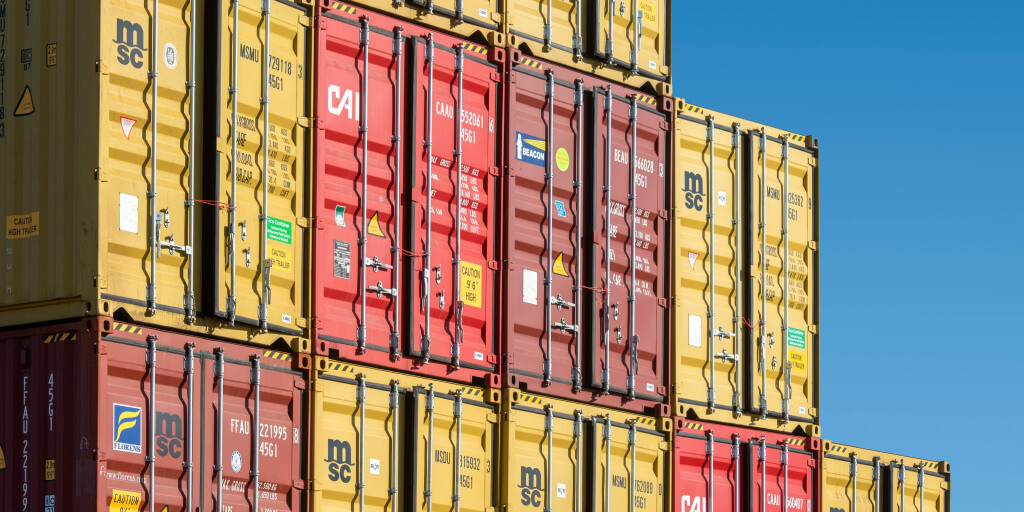The silent engine of cross-border ecommerce: the de minimis exemption
This rule, which for years allowed countless de minimis shipments (individual articles and packages valued under a certain threshold) to enter the United States without a dime of duty, was the quiet hero of the modern consumer.
The term ‘de minimis’ is a Latin term historically used in legal contexts to denote matters too minor to merit consideration.
It was the reason why a hand-knitted scarf from a far artisan or a must-have gadget from an Asian tech hub could arrive at your door without a hidden cost, regardless of the origin of the goods. These articles, previously duty-free, moved seamlessly through the international postal network and postal services, which are critical channels for global shipments.
The benefit of this rule was felt by both consumers and small businesses, who relied on the exemption for small amounts of goods to remain competitive.
However, in a monumental shift that went into effect on August 29, 2025, a new executive order has pulled the rug out from under this system, fundamentally reshaping the global ecommerce landscape and leaving a trail of questions for consumers and businesses alike.
Understanding the de minimis rule
The de minimis rule, derived from the Latin phrase “de minimis non curat lex”, meaning “the law does not concern itself with trifling matters”, is a legal doctrine that has played a pivotal role in international commerce.
In practical terms, the de minimis exemption sets a threshold value below which imported goods are not subject to customs duties or taxes.
This threshold varies from country to country, but its purpose is universal: to streamline the flow of low-value imports and reduce administrative burdens for both customs authorities and businesses.
For years, this rule has allowed millions of small shipments to cross borders duty-free, making it easier and more cost-effective for consumers to access a global marketplace.
Businesses, especially small enterprises and ecommerce platforms, have relied on the de minimis exemption to offer a wide array of imported goods at competitive prices, without the added complexity and cost of customs duties.
Thus, the de minimis rule has become a cornerstone of modern commerce, enabling a frictionless exchange of goods and supporting the growth of international trade.
Understanding this legal doctrine is essential for anyone involved in global shipments, as it directly impacts the cost, speed, and accessibility of imported goods for consumers and businesses alike.
From national security to price hikes

The Trump administration’s decision to dismantle the de minimis was publicly justified as a critical measure to protect national interests, with the president and the White House issuing an executive order to address the issue.
Officials framed the duty-free channel as a “catastrophic” vector for a flood of counterfeit goods, illicit materials, and unsafe products, including fentanyl, highlighting the need for enhanced border protection against illicit drugs.
This claim provided the official rationale for a sweeping executive order, issued in the context of national emergencies, that has had immediate and profound consequences for the global supply chain.
However, to understand the full scope of this policy shift, one must look beyond the political rhetoric and examine the economic reality it creates.
The repeal of the rule presents a significant strategic challenge to a range of ecommerce giants – from Amazon and Shein to Temu and AliExpress – that have long benefited from the exemption. Having built their business models on the ability to ship millions of low-cost parcels directly to U.S. consumers without tariffs, these platforms are now facing substantial margin pressures.
This new reality of increased costs will inevitably be passed on to consumers, leading to higher prices on many of the popular, low-cost imports that defined the de minimis era. Now, applicable duties, import duties, and the relevant tariff rate are assessed on each shipment, significantly impacting the cost structure.
Shippers must comply with the new requirements, and duties must be paid in the manner prescribed by customs authorities.
Ultimately, while the policy may aim to address broader national concerns, its most immediate and tangible effect is a direct hit to the consumer’s wallet and a fundamental restructuring of the global ecommerce marketplace.
Trade policy in the spotlight

In recent years, the de minimis exemption has found itself at the center of heated trade policy debates. Governments around the world are re-evaluating the role of the de minimis rule in the face of shifting economic priorities and growing concerns over national security.
The Trump administration, for instance, introduced sweeping regulations that suspended the de minimis exemption for certain countries, arguing that such measures were necessary to protect American lives and safeguard national interests.
These changes, enacted through executive orders, have injected a new level of uncertainty into the global trading system.
The European Union has also signalled its intent to reconsider the de minimis exemption, citing the need to level the playing field for domestic industries and address the challenges posed by unfair competition from low-cost imports.
While these policy shifts are designed to bolster national security and support local businesses, they have sparked criticism from companies and consumers who fear increased costs and higher prices for imported goods.
As countries continue to adjust their regulations, the future of the de minimis exemption remains uncertain, leaving businesses and consumers to navigate a rapidly evolving landscape marked by new rules, additional duties, and ongoing regulatory changes.
A new frictionless era for ecommerce
The days of a frictionless, low-cost international shopping experience are now a distant memory.
The price of imported goods has undergone a rapid and sometimes dramatic increase. For consumers, this shift means that the affordable finds will become significantly more expensive, potentially limiting access to a wide range of goods and forcing a reassessment of spending habits.
Beyond the price hikes, the administrative and logistical waves of this policy change have created a tsunami of new challenges. The logistical efficiency that was once the hallmark of global shipping has been thrown into disarray.
With every single package now subject to potential tariffs and a more rigorous customs process, the system is straining under the immense new administrative burden. Shippers are now facing additional compliance challenges, as they must adapt to new customs requirements and stricter enforcement measures.
The detailed customs declarations required for each shipment have created operational bottlenecks that have slowed delivery times to a crawl.
In a stark demonstration of this new reality, some major logistics providers, including giants like DHL, have been forced to temporarily suspend shipments to the US, a move that has not only created delays but also eroded consumer confidence in the reliability of international shipping.
Postal services and the international postal network have also been significantly affected, with some carriers in Europe and Asia pausing or suspending deliveries due to the new regulations, further disrupting the flow of de minimis shipments and impacting the efficiency of cross-border trade.
This new landscape is a far cry from the near-instant gratification that modern ecommerce has conditioned us to expect.
The fate of low-cost imports

The removal of the de minimis exemption marks a significant turning point for low-cost imports, which have long been a hallmark of the ecommerce revolution.
Without the protection of the de minimis rule, every imported item – regardless of its value – becomes subject to customs duties and additional administrative requirements. This shift means that businesses, especially those operating on ecommerce platforms, will face increased costs that are likely to be passed on to consumers in the form of higher prices.
For shoppers accustomed to the convenience and affordability of global online marketplaces, the new regulations introduced by various countries represent a fundamental change.
The cost advantage that once made low-cost imports so attractive is eroding, and the variety of goods available at competitive prices may shrink as businesses grapple with the added burden of customs duties and compliance.
As the dust settles on these new trade policies, consumers can expect a more complex and costly online shopping experience, with the era of duty-free, low-value imports giving way to a new reality shaped by national security concerns and the drive to protect domestic industries.
The de minimis rule, once a symbol of open commerce, now stands as a reminder of the delicate balance between global trade and national priorities.
New obstacles, new solutions

Where one door closes, another often opens, and the repeal of the de minimis rule has given rise to new economic opportunities. The complex web of tariffs, compliance checks, and customs documentation has created a booming market for technology solutions.
Companies are scrambling to develop and implement AI-enhanced solutions for automated tariff computation and streamlined customs declarations, with employees tasked with implementing these new compliance solutions. This is a clear example of how a protectionist trade policy, while creating obstacles for some, can be a massive catalyst for innovation and growth in an entirely new sector.
Furthermore, the policy is driving a strategic re-evaluation for businesses worldwide.
Faced with the complexities and costs of cross-border shipping, many companies are now exploring “nearshoring” and domestic fulfillment strategies. This means moving production and distribution facilities closer to their end markets, effectively reducing their reliance on long-distance supply chains and avoiding the new tariffs altogether.
While this could revitalize domestic manufacturing and logistics industries, it also represents a fundamental shift away from the globalized, just-in-time model of production that has dominated for decades.
The legal dimension of this policy is also a significant storyline. Legal experts are questioning whether the Trump administration overstepped its authority in unilaterally repealing a long-standing trade rule. The outcome of these legal battles could either cement the new policy or send it back to the drawing board, especially if a court ruling determines the legality of the administration’s actions, adding another layer of uncertainty to an already complex situation.
The new normal: navigating an uncertain future

In conclusion, the repeal of the de minimis rule is a turning point for international ecommerce. It is a powerful example of how a single policy change can have profound and multifaceted effects, from the price of a consumer good to the operational strategies of global corporations and the growth of new industries.
While proponents of the change champion it as a vital step to protect domestic industries and national security, its implementation has created a new reality for consumers, one marked by higher costs and longer wait times.
The new landscape is one of increased complexity and shifting priorities, where the frictionless digital marketplace of the past is being replaced by a more regulated system.
The era of simply unboxing a low-cost international package is over. In its place is a new, more complicated journey, the destination of which is yet unknown.
About Webinterpret
Webinterpret supports merchants selling on eBay.
Our AI-based solutions enable more effective selling through automated listing localization, advertising, and returns and ensure all products placed on EU markets are GPSR-compliant.
By giving your international customers a full, end-to-end local shopping experience, Webinterpret improves your conversion and helps establish your business globally.






